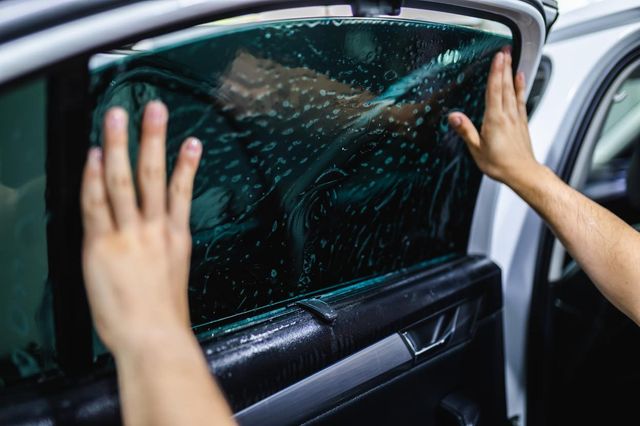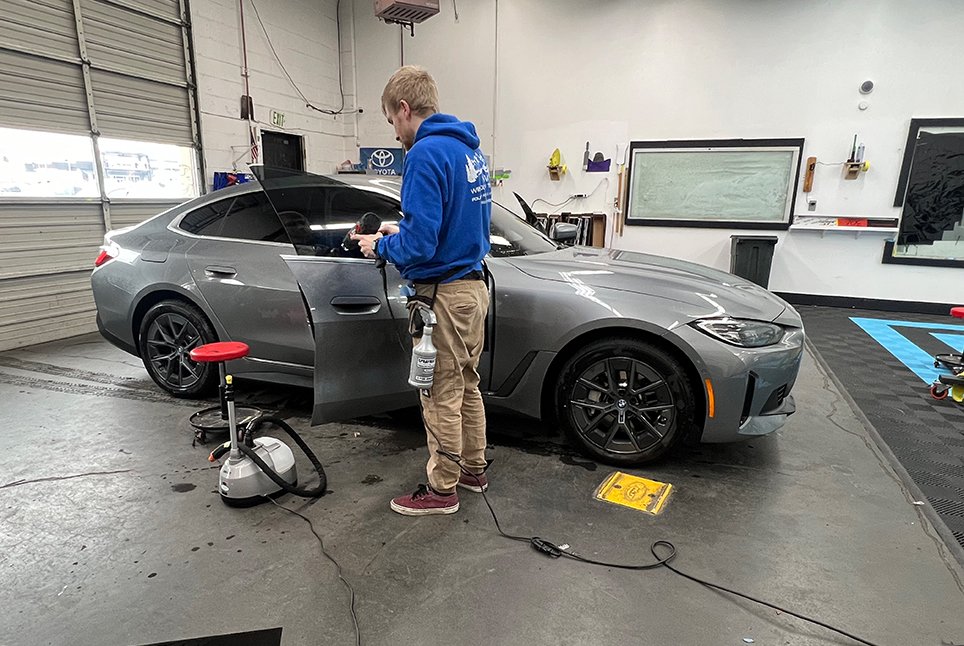Just How Vehicle Window Tinting Maintains Your Lorry Cool in Heat
Just How Vehicle Window Tinting Maintains Your Lorry Cool in Heat
Blog Article
Home Window Tinting Laws and Standards: What You Need to Know Before Tinting Your Auto
Prior to waging window tinting for your lorry, it is essential to familiarize on your own with the diverse laws and standards that govern this technique across different states. These regulations dictate the permitted levels of color darkness, typically determined by noticeable light transmission (VLT) percents, and include certain stipulations for front windshields intended at guaranteeing road safety and security. Furthermore, specific territories might provide clinical exceptions for people with certifying conditions. Recognizing these intricacies can conserve you from prospective lawful implications, but what are the certain guidelines in your state?
Review of Window Tinting Rules
Window tinting laws are frequently based on variation across various territories, showing neighborhood regulations and safety considerations. These laws dictate the acceptable degrees of color darkness and reflectiveness on car windows, ensuring that chauffeurs maintain appropriate presence while likewise safeguarding against hazardous UV rays and warm.
Many guidelines identify window tinting based upon the Visible Light Transmission (VLT) percentage, which indicates the quantity of light that can pass through the window. Generally, reduced VLT percents symbolize darker tints. Regulations commonly separate between the front, side, and back windows, with more stringent limitations related to the front windshield to improve safety for both the motorist and other road customers.
Additionally, some jurisdictions enforce restrictions on the reflectivity of the tint, avoiding excessive glare that might impair presence. Exemptions to these laws may exist for individuals with details medical conditions needing added sunlight security. Compliance with home window tinting guidelines is important, as offenses can cause penalties, necessary removal of the tint, and prospective boosts in insurance premiums. For that reason, it is essential for lorry proprietors to acquaint themselves with neighborhood legislations prior to waging window tinting installations.
State-by-State Color Laws
Recognizing the certain home window tinting guidelines in each state is important for vehicle proprietors looking for to adhere to the law. Each state in the united state has developed its own set of policies controling home window tinting, which can differ significantly. These regulations typically dictate the allowed degrees of tint darkness, the types of windows that can be tinted, and any type of medical exceptions that may apply.
As an example, states like The golden state have rigorous limitations on color darkness for front home windows, while others, such as New Mexico, may enable darker tints. Additionally, certain states mandate particular visibility percentages for different windows, consisting of the windscreen, front side home windows, and back home windows. It is essential for cars and truck proprietors to acquaint themselves with their state's legislations to avoid potential fines or penalties.
Additionally, some states may require an accreditation sticker label to be put on tinted home windows, showing conformity with state legislations. Failure to stick to these regulations not only takes the chance of legal effects however can also influence safety and security and exposure while driving. As a result, car owners need to conduct thorough research study or get in touch with neighborhood authorities to guarantee full understanding and compliance with state-by-state color policies.
Allowed Color Types and degrees
Numerous vehicle owners may be surprised to find out that permitted tint degrees and kinds vary commonly throughout various states. Each state has developed its own policies relating to the permitted darkness and reflectivity of window color, frequently gauged by Visible Light Transmission (VLT) percentages. VLT describes the amount of light that can pass through the colored windows; hence, a reduced portion shows a darker color.
Furthermore, the kinds of color materials enabled can go to this website vary, with some states forbiding metal or mirror-like coatings. It is crucial for automobile owners to acquaint themselves with their state's particular laws to guarantee conformity. Non-compliance can lead to penalties, obligatory elimination of the color, or various other legal repercussions, making it imperative to recognize these guidelines before waging setup.
Medical Exceptions for Tinting
While not all states offer allowances for clinical exemptions concerning window tinting, those that do identify the need for specific individuals to boost presence and convenience due to clinical problems. Different medical conditions, such as lupus, skin cancer cells, and specific eye problems, can render browse around these guys individuals specifically delicate to sunshine. These individuals might need darker colors to protect themselves from dangerous UV rays and glow.

It is very important to keep in mind that despite having a clinical exception, there might still be restrictions on the degree of color permitted. Conformity with state regulations makes sure that individuals are both protected and within legal limits. Those taking into consideration clinical exceptions must call their local Division of Electric motor Automobiles or comparable authority to comprehend the demands and procedures necessary to obtain an exception efficiently.
Charges for Non-Compliance
Stopping working to follow home window tinting laws can bring about significant fines, which differ by state. Police are encouraged to provide citations for vehicles that do not stick to the specified tinting laws. These penalties normally consist of penalties, which can vary from moderate quantities to several hundred bucks, depending on the seriousness of the violation and the state in concern.
In some jurisdictions, duplicated offenses may cause intensifying penalties or extra charges, such as necessary court looks. Additionally, non-compliance may demand the removal of illegal tinting, typically at the proprietor's expenditure. In severe cases, habitual culprits might deal with suspension of their vehicle enrollment till compliance is attained.
In addition, insurance policy ramifications might arise from getting several citations for window tint offenses. Insurance companies might view such violations as an indication of riskier behavior, possibly bring about enhanced premiums or trouble in protection.
To stay clear of these charges, it is important for automobile proprietors to familiarize themselves with their neighborhood home window tinting regulations and ensure that their car complies (Window Tinting). This proactive method not just stays clear top article of legal ramifications but likewise promotes roadway safety and security
Conclusion

Most laws identify home window tinting based on the Visible Light Transmission (VLT) percent, which suggests the amount of light that can pass via the home window. Conformity with window tinting regulations is critical, as offenses can result in fines, required removal of the color, and possible rises in insurance costs.Understanding the specific home window tinting guidelines in each state is vital for lorry proprietors seeking to conform with the legislation. These laws frequently dictate the permitted degrees of tint darkness, the kinds of home windows that can be tinted, and any kind of clinical exemptions that might use.
For instance, states like The golden state have stringent limitations on color darkness for front home windows, while others, such as New Mexico, may allow darker tints.
Report this page